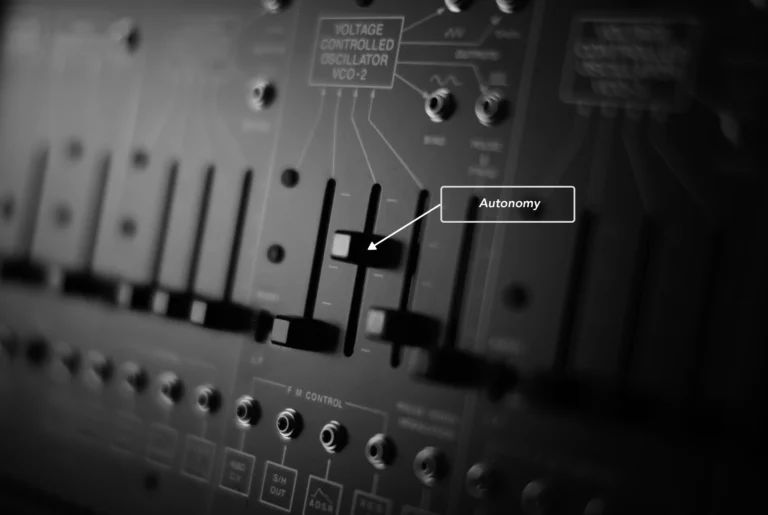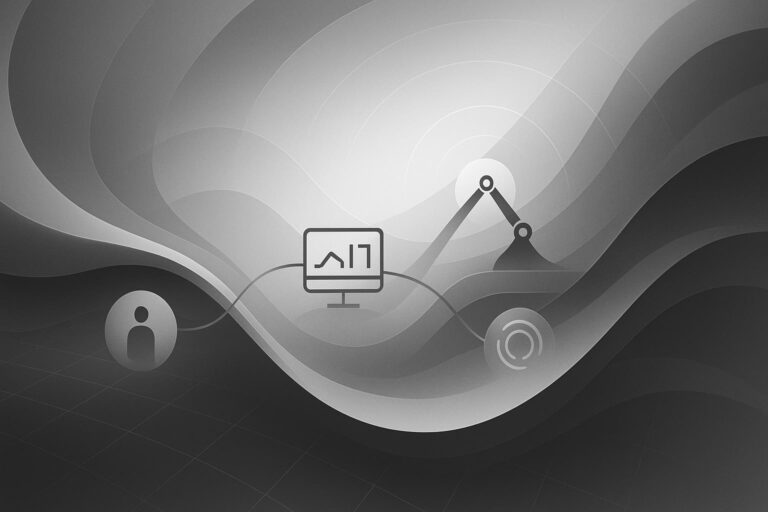TL;DR: We don’t wait for downtime. Our agent watches for signals—early patterns that precede incidents—then spins up a generative investigation that adapts to the situation, collaborates with your team, and acts within explicit autonomy guardrails. The result: fewer incidents, faster resolution, and expertise that compounds across your physical operations.
The 2:00 a.m. Difference
At 2:00 a.m., an incident forces everyone out of bed. Production halts. Customers wait. A root cause analysis starts under pressure.
At 2:00 p.m., a signal quietly appears: a drift in a sensor, a pattern in logs, a threshold crossing that—based on history—often precedes downtime in two to three weeks. No sirens. No panic. Just a nudge to look closer.
A signal is a stitch in time to save you nine.
Why “Signal,” Not “Incident”
The word choice is deliberate. Incident implies damage already done—lost throughput, missed SLAs, unhappy customers. A signal impliesSignal implies potential that something might be trending the wrong way. Catching it early lets you turn emergency firefighting into proactive operations.
Instead of “Robot A is down,” you get “Robot A is exhibiting the pattern that usually leads to downtime in ~2–3 weeks.”
The difference between a calm inspection and a crisis.
Generative Investigations (Adaptive by Design)
Traditional pipelines are brittle. Real facilities aren’t. For every signal, our agent composes the steps it needs on the fly:
Analyze logs → check sensor drift → validate with historical cohorts → recommend preventive maintenance
Or: Run targeted diagnostic → confirm resolution
Different signals demand different playbooks. The point isn’t to lock in one perfect flow—it’s to generate the right one for this context.
A Shared Status Model For Transparency
Adaptive steps, consistent progress language:
Investigating — attribute the pattern, form root‑cause hypotheses
Planning — propose a path (actions, owners, timing, rollback)
Resolving — execute actions, verify outcomes
Complete — capture learnings, update autonomy
Signal detected
└─► Investigating: pattern attribution, root‑cause hypotheses
└─► Planning: chosen path, rollback, who/when
└─► Resolving: execute, validate, record outcome
└─► Complete: learnings codified, autonomy updated
That shared backbone makes it easy to track dozens of parallel investigations and coordinate work across teams.
Collaborative Intelligence: Operator + Agent
We don’t pretend the agent can see everything. When it can’t, it asks:
“I see a pressure anomaly that could indicate a micro‑leak, but I can’t see the equipment. Please post a photo of the valve train and confirm if there’s moisture at junction #2.”
The AI handles large‑scale pattern recognition; but needs help with perception, safety, and judgment. Together, they resolve issues the agent couldn’t solve alone; and faster than the operator could solve alone.
Escalation with Context (Never a Dumb Hand‑Off)
The agent operates within a mandate and a confidence threshold. Inside those bounds, it acts autonomously. Outside them, it escalates with a crisp brief:
What I found: signal → likely cause
What I did: checks run, diagnostics, mitigations
What I’m unsure about: gaps, risks
What I need from you: e.g., “visual confirm gasket moisture,” “approve firmware rollback,” “schedule bearing inspection”
This prevents context‑free paging and shortens mean‑time‑to‑decision.
Trust, Guardrails, and the Learning Loop
Autonomy guardrails: allowed actions, scope of change, time windows, and rollback plans are explicit. Safety checks ensure actions are reversible and bounded.
Confidence thresholds: the agent quantifies uncertainty. Below threshold → escalate. Above threshold → proceed with logging and verification.
Learning loop: every investigation writes back what worked, what didn’t, and which steps were decisive. Over time, more issues qualify for safe auto‑resolution, and escalations become rarer—and sharper.
Philosophy: We believe in augmentation, not automation. Operators, always in control, stay in the loop by design, and the agent earns trust incrementally.
What Your Team Actually Sees
1) Live Signals Feed: prioritized by risk, impact window, and confidence, with plain‑language summaries and drill‑downs to logs/metrics/history.
2) Investigation Cards: each in one of four statuses. Examples:
Investigating: “Telemetry on Units R14–R17 matches pre‑failure pattern observed 7× last quarter.”
Planning: “Propose: recalibrate IMU on R14 today; observe R15–R17 for 48h. Rollback in place.”
Resolving: “Executing calibration on R14; monitoring post‑action drift.”
Complete: “Pattern neutralized; added ‘IMU recal temp‑window’ heuristic to library.”
3) Actionable Escalations: concrete asks with context: approvals, photos, quick on‑site checks.
4) Weekly Digest: signals caught early, time‑to‑resolution, incidents prevented, and newly auto‑resolvable classes added.
Example: End‑to‑End in the Wild
Signal: Conveyor torque variance rising on Line 3; 82% similarity to a known pre‑failure pattern (typical failure T+10–14 days).
Investigating: Correlate torque with ambient temperature, belt wear logs, and jam events; compare across sister lines.
Planning: Recommend belt tension check and targeted lubrication now; schedule bearing inspection during Friday changeover.
Resolving: Execute checks; variance returns to baseline; set 7‑day watch.
Complete: Codify “torque‑temp‑wear triad” heuristic; raise confidence for future auto‑resolution.
Outcome: No downtime, no scramble—just a quiet save.
The Outcomes That Matter
Fewer incidents: because you catch precursors days or weeks in advance.
Faster resolution: because root‑cause work is done before escalation.
Distributed expertise: the one expert’s trick becomes fleet knowledge.
Expanding autonomy: safe auto‑resolutions grow over time as trust accumulates.
Want to transform your operations from reactive to proactive? Come talk to us!



